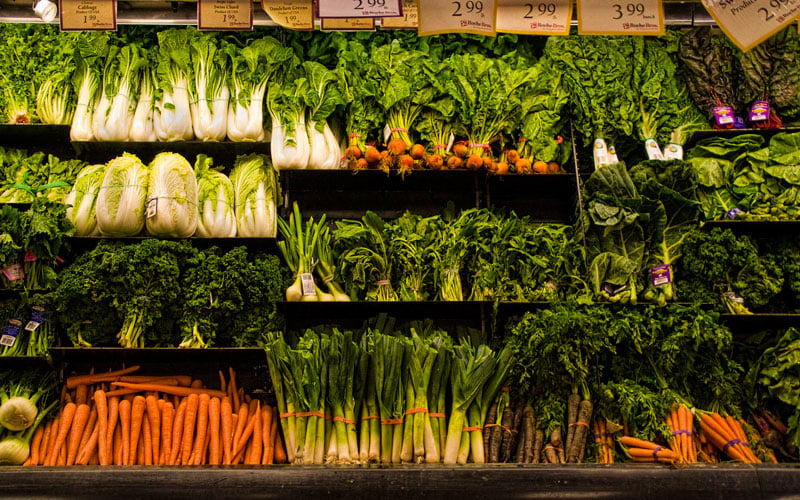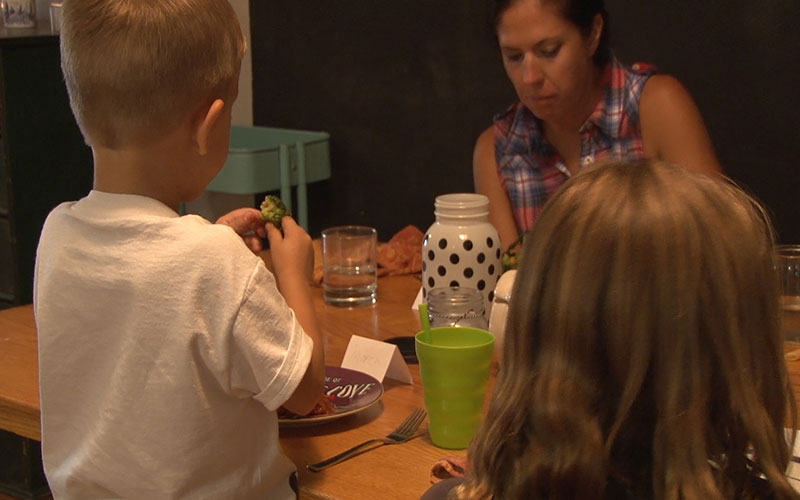
Sixteen basic grocery items have increased 6.5 percent from the second quarter of 2015, according to a survey by the Arizona Farm Bureau. (Photo via Creative Commons)

Julie Murphree of the Arizona Farm Bureau Federation said her group was surprised when they saw the jump in food prices in fall of 2015. (Photo by Jessi Schultz/Cronkite News)

Phoenix mom Ann Coover copes with food prices by shopping different grocery stores, clipping coupons and looking for deals. (Photo by Jessi Schultz/Cronkite News)
Food prices are up 6.5 percent in the third quarter of 2015, according to the latest survey by the Arizona Farm Bureau, and consumers are noticing.
“I do feel that grocery stores in general have gone up in everything,” said Ann Coover, a Phoenix resident and mom of three young kids.
The main reason for the higher prices is the cost of beef, particularly sirloin. According to the survey, a pound of sirloin roast increased from $5.98 to $7.65.
Tim McCabe, President of Arizona Food Marketing Alliance, says beef is in high demand, yet the supply is low.
“We are still feeling the effects of the drought last year which significantly cut down the size of the herds,” he said. “So the price of beef has continued to go up.”
Julie Murphree of the Arizona Farm Bureau doesn’t think beef prices will go down any time soon.
“To bring an average steer to market for you and I to enjoy in the grocery store, it’s a 24-month growth period for that particular animal,” she said. “So you can’t adjust those supplies over night.”
Other foods that saw an increase this quarter were salad mixes, apples, deli ham, chicken breasts and shredded cheese.
Salad mix increased 58 cents to $2.98 a bag, apples are up 44 cents to $1.69 per pound, deli ham is up 85 cents to $4.77 per pound, chicken breasts are up 12 cents, and shredded cheese increased 20 cents to $5.34 per pound.
Murphree was surprised by the big jump.
“For us at Arizona Farm Bureau, looking at it, we said wow, that’s quite the increase,” Murphree said.
It is not all bad news. Some foods saw a decrease. Milk is down 55 cents per gallon to $2.42. Eggs, white bread, oat cereal, bacon and potatoes are among the other basic food items that have decreased.
Coover said she is not as affected by the food prices rising because she has learned to budget, “If something isn’t on sale, I’m not going to buy it.”
She searches the weekly circulars for coupons and sales, goes to about three to four grocery stores each shopping trip, and plans her meals for the week beforehand.
Families like the Coovers can manage the price increase, but lower income families could have a harder time. St Mary’s Food Bank in downtown Phoenix also watches the prices and works to fill gaps in the families’ grocery lists.
“They don’t have the extra money to spend on food, so everything that they are not able to get they are going to turn around and go to food banks to try to receive,” said Jerry Brown of St Mary’s Food Bank.
The food bank relies on donors and sponsors for higher priced food, like produce.
Brown said people who go to the food bank do not normally buy higher priced fruits and vegetables, but it is important for their diets.
Murphree said smart shopping can help families cope with higher prices.
“The reality of it is, if you stick to your basics and stay away from junk and processed foods you’re going to really stretch that food dollar,” she said.
The Arizona Farm Bureau’s website, FillYourPlate.Org has 18 money saving tips to stretch your food dollars.